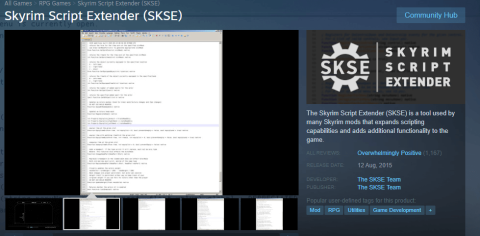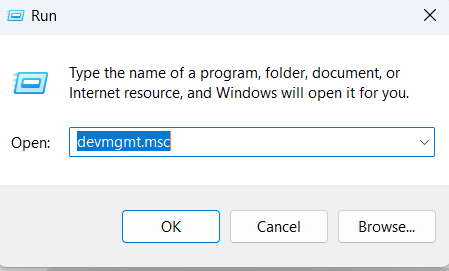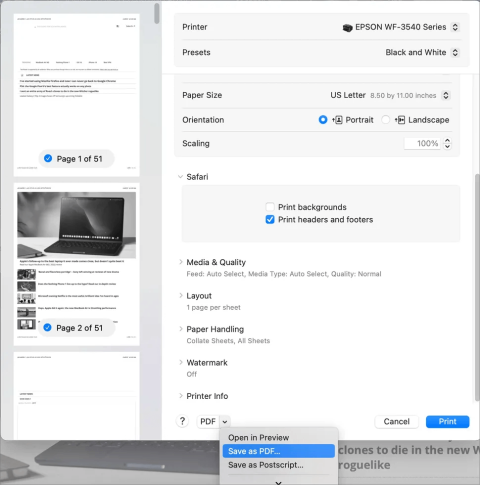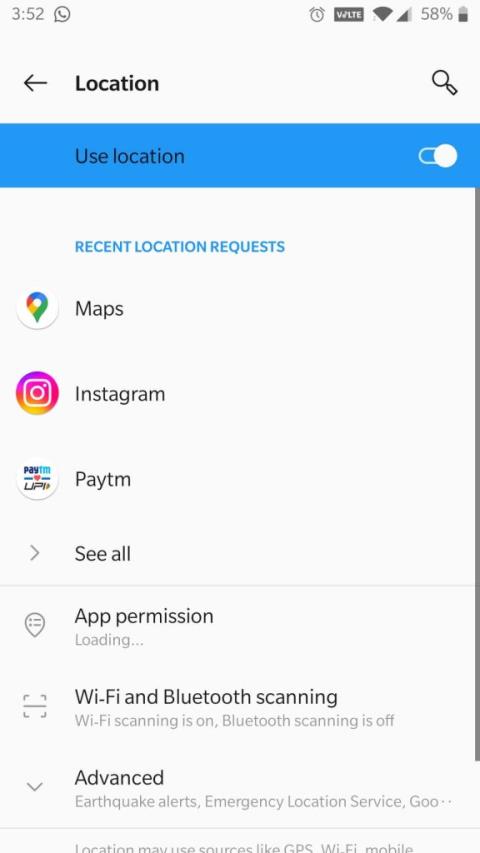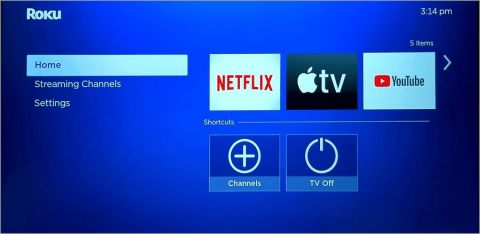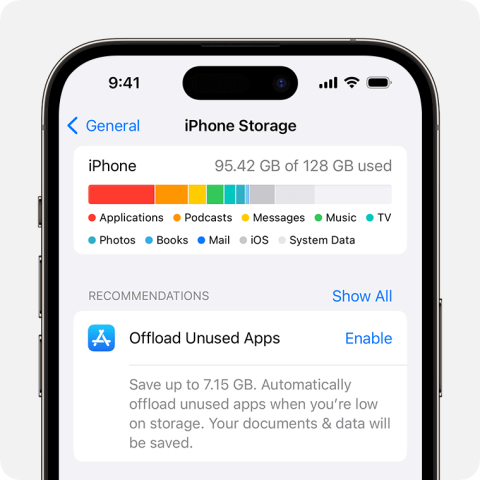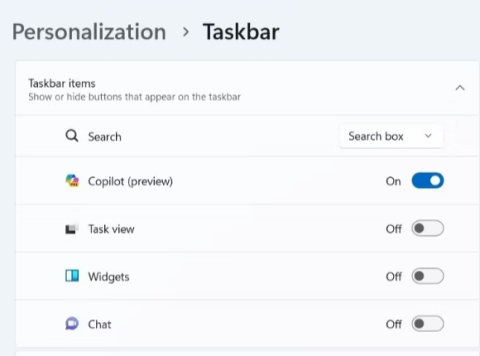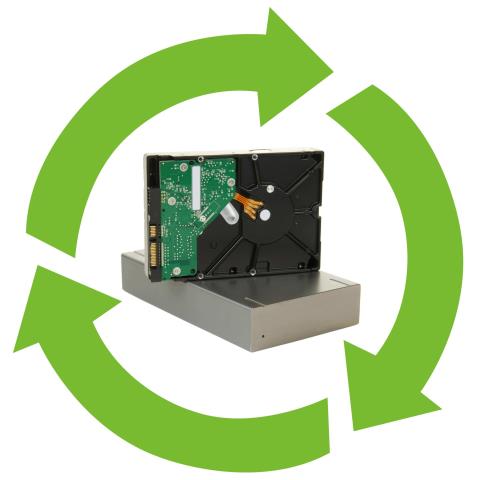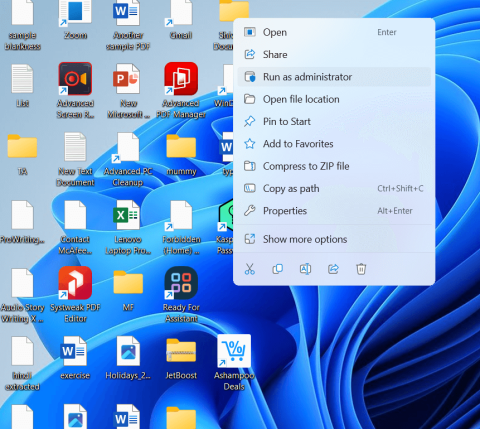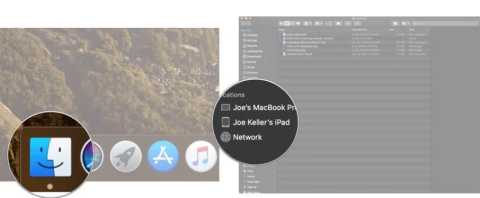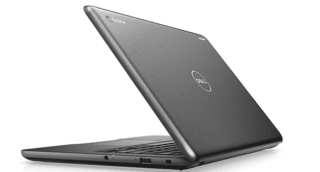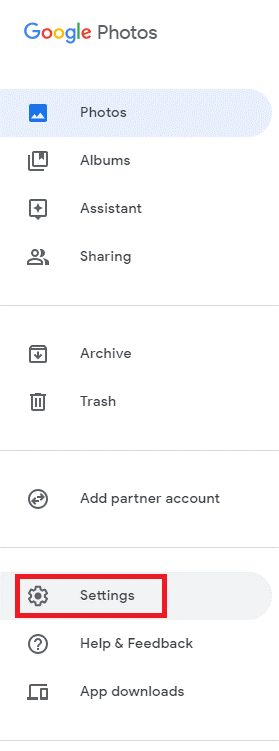Il mondo è in isolamento e sta facendo del suo meglio per contenere la diffusione del COVID-19, l'orribile pandemia che ha infettato oltre 1,4 milioni di persone in tutto il mondo. Il distanziamento sociale è l'unica strategia efficace a questo punto e dobbiamo seguire rigorosamente il regolamento per impedire all'agente patogeno di acquisire più ospiti.
Con le misure di blocco in atto, le aziende, le istituzioni educative e persino i club del libro hanno cercato rifugio nelle piattaforme di videochiamata /conferenza. Ci sono un sacco di opzioni tra cui scegliere, ovviamente, ma nessun'altra piattaforma ha visto la sua base di utenti salire così in alto come una delle applicazioni leader del segmento: Zoom.
In questo pezzo, ti guideremo attraverso gli angoli e gli angoli dell'applicazione, assicurandoti che tu abbia una buona idea di come funziona la piattaforma e quali sono le sue caratteristiche, sia che tu sia una versione gratuita di Zoom o una con licenza. Quindi, senza ulteriori indugi, veniamo al punto.
Contenuti
Cos'è la riunione Zoom?
Zoom è molto orgoglioso di facilitare un ambiente d'ufficio, anche nelle località più remote. Dandoti accesso a una serie di strumenti di produttività e alla migliore chiarezza audio/video della categoria, Zoom si assicura che le tue riunioni siano tanto efficienti quanto facili.
Una riunione in conferenza remota ospitata sulla piattaforma Zoom è chiamata riunione Zoom. L'organizzatore della riunione ha il maggior controllo, mentre gli altri partecipanti, se non sono stati assegnati co-organizzatori, hanno la stessa ponderazione.
Zoom Meeting Setup: di cosa hai bisogno
Poiché condurrete l'intera sessione online, è di fondamentale importanza disporre di una connessione Internet stabile. Altri requisiti sono:
- Account Zoom (gratuito o a pagamento)
- Browser Web o app Zoom (disponibile sia per desktop che per telefono)
- Opzionale:
- Webcam per Videoconferenze
- Microfono
- Buone condizioni di luce
- Hardware potente per facilitare gli sfondi virtuali
Aggiornamento [20 agosto 2020] : Zoom ha aggiunto la possibilità di partecipare alle riunioni utilizzando Zoom a casa su display intelligenti. La funzionalità ti consentirà di entrare nelle riunioni con il semplice tocco di un pulsante o utilizzando i comandi vocali Il primo a riceverlo sarà il Portale Facebook (a settembre), seguito da Amazon Echo Show e Google Nest Hub Max durante la fine dell'autunno 2020.
Esiste un'app separata per le riunioni Zoom?
Il client che scarichi dopo esserti registrato su Zoom funge da app all-in-one per tutti i servizi Zoom. Non esiste un'app separata per le sole riunioni Zoom. L'unica app ti consente di ospitare e partecipare alle riunioni Zoom, sia che tu abbia un telefono o un PC.
Come ospitare una riunione Zoom?
Come accennato nella sezione precedente, è necessario un account Zoom per ospitare o partecipare alle riunioni. Se non lo hai già fatto, clicca su questo link per registrarti. Dopo aver completato il processo di registrazione, devi solo accedere e iniziare a ospitare una riunione creando una nuova riunione.
Organizza la riunione dall'app per PC
Se utilizzi un client desktop, apri l'app, accedi e fai clic sull'opzione Nuova riunione o Condividi schermo.

Organizza la riunione dal browser
Visita Zoom , accedi e nella home page, posiziona il mouse sull'opzione "HOST A MEETING" e quindi seleziona una delle tre opzioni tra With Video Off, With Video On e Share Screen Only.
Come invitare i tuoi amici a una riunione
Puoi invitare i tuoi amici durante una riunione o durante la creazione di una riunione pianificata. Esploriamo come.
Invita durante una riunione
Organizza una riunione come descritto sopra. Nella finestra della riunione che si apre, fai clic su Invita per aggiungere partecipanti. Dovrai aggiungere il nome del contatto o l'ID e-mail per aggiungerli alla riunione.

Invita a una riunione programmata
Sul Web , visita la pagina Riunioni imminenti, quindi metti l'orologio su Pianifica riunione > e fai clic sul collegamento Copia l'invito .

Si aprirà una finestra pop-up con i dettagli della riunione, come mostrato di seguito.

Nell'app per PC, premi prima la scheda della riunione in alto per ottenere un elenco di tutte le riunioni pianificate. Ora, fai clic sul collegamento della riunione di cui desideri invitare i dettagli, quindi fai clic su Copia invito (come mostrato di seguito).


I dettagli verranno copiati negli appunti del tuo PC. Quindi, per condividere, è sufficiente comporre un'e-mail e incollare i dettagli nel corpo dell'e - mail . Oppure condividilo con qualsiasi altro mezzo come messaggio.
Come correggere l'errore "L'organizzatore ha un'altra riunione in corso"?
Zoom è una delle piattaforme di videoconferenza più user-friendly al mondo. Ma anche le cose più convenienti tendono ad avere alcune limitazioni. Per Zoom, è il numero di riunioni che puoi ospitare contemporaneamente.
La piattaforma non consente a nessun utente, a pagamento o gratuito, di eseguire più riunioni contemporaneamente. Quindi, se speravi di saltare da una riunione all'altra, Zoom potrebbe non essere la soluzione migliore per te.
Se stai affrontando questo problema - "L'ospite ha un'altra riunione in corso" - come partecipante, chiedi semplicemente al tuo ospite di terminare correttamente la riunione precedente. Questo problema può verificarsi solo se l'organizzatore pianifica due riunioni sovrapposte e abilita " Partecipa prima dell'organizzatore " per entrambi.
Come partecipare a una riunione Zoom?
Ecco come partecipare a una riunione sull'app per PC o sul browser web.
Partecipa a una riunione sull'app per PC

Partecipare a una riunione Zoom è semplice come ospitarne una. Una volta effettuato l'accesso al tuo client desktop, fai semplicemente clic sul pulsante Partecipa.

Inserisci l'ID della riunione Zoom, seleziona un paio di opzioni, se desideri che Zoom acceda al microfono e alla webcam, e premi Partecipa . Dovrai inserire la password per la tua riunione che devi avere l'ospite della riunione.
Partecipa a una riunione sul web
D'altra parte, se stai utilizzando un browser , accedi prima, quindi fai clic su PARTECIPA A UN MEETING. Oppure, fare clic su questo collegamento per visitare direttamente la pagina Partecipa a una riunione . Quindi, inserisci l'ID della riunione che hai ricevuto dall'ospite della riunione
Come trovare la password della riunione
Se stai organizzando una riunione, puoi semplicemente fare clic sul pulsante Invita nella finestra della riunione, quindi fare clic sul pulsante Copia invito nella nuova finestra pop-up.
Tuttavia, se stai cercando di partecipare a una riunione, dovrai chiedere la password all'organizzatore della riunione. Leggi di più sul link sottostante.
► Come trovare la password della riunione Zoom
Come programmare un incontro?
Abbiamo già visto quanto sia facile ospitare un meeting su Zoom. In questa sezione ti spiegheremo come programmare i tuoi incontri sulla piattaforma. Quando si tratta di riunioni pianificate, hai due opzioni: tramite il portale Web o il client desktop.
portale web
Vai al portale ufficiale di Zoom e accedi con le credenziali corrette. Ora, fai clic su Il mio account per caricare la pagina del profilo . Ora vai alla scheda Riunioni . Non solo la scheda Riunioni ti dà il pieno controllo sulle riunioni imminenti, ma ti consente anche di pianificarne una nuova con solo un paio di clic.

Fare clic su Pianifica una nuova riunione per iniziare. Imposta l'argomento della riunione, la data e l'ora, la durata, la password, se a te (ospitante) e ai partecipanti è consentito attivare il feed video, la sorgente audio e altro. Dopo aver confermato le opzioni, fare clic su Salva per completare il processo.

Client desktop
Dopo aver effettuato l'accesso, fai clic sul pulsante Pianifica nella dashboard del client Zoom. Simile al portale web, puoi impostare l'argomento della discussione, la data e l'ora, la password e altro. Fai clic su Avanzate per scoprire opzioni aggiuntive, come la sala d'attesa, l'accesso prima dell'host e altro ancora. Dopo che sei soddisfatto, fai clic su Pianifica per confermare la riunione.
Come pianificare riunioni ricorrenti?
Nel tentativo di semplificare la vita agli host che organizzano riunioni giornaliere, settimanali o mensili, Zoom ha introdotto una funzionalità chiamata Riunioni ricorrenti. La funzione consente di pianificare riunioni con più occorrenze, utilizzando lo stesso ID riunione. In questo modo, i partecipanti non dovranno affrontare il fastidio di accedere ogni volta che si svolge una riunione sullo stesso argomento.

Per attivarlo, per prima cosa accedi al tuo client desktop e fai clic su Pianifica . Seleziona l' opzione Riunioni ricorrenti e premi Pianifica . Consenti l'accesso al calendario che hai selezionato, seleziona la ricorrenza e, infine, premi Salva .

Come terminare una riunione Zoom
Quando sei in una riunione, puoi terminarla con un solo clic.

If you are a host of the meeting, then you get the three options as shown in the screenshot above. However, if you are a participant, then you won’t get the ‘End Meeting for All’ option.
What is a Zoom Meeting ID?

Each Zoom meeting is identified using a unique numeric id called a Meeting ID. These are 9-digit, randomly assigned numbers, with two hyphens (-) coming after the three-digit intervals.
If you’re the host, you’ll need to convey your Meeting ID to the participants. Attendees, on the other hand, are required to ask the host for the Meeting ID. Meeting IDs can also be found on meeting invites.
It’s to be noted that Zoom also assigns a unique Personal Meeting ID to each user. You can also use that 12-digit number to host a meeting. However, unlike regular Meeting IDs, Personal Meeting IDs don’t change with each meeting.
Do you need any codes to join Zoom meetings?
No, you don’t need a code. Zoom meetings are identified by their unique Meeting IDs. So, you’ll need to ask your host for the meeting ID before proceeding. If the meeting’s password-protected, you’ll also need the password. No other codes are required.
Zoom Video meeting tips
Now that you’re familiar with the way Zoom operates, it’s time to take a look at how you could improve your video conferences. From your appearance to the way your video background looks, there are plenty of exciting things in store. We, however, will focus on the top five tips of the lot.
Screen share
Screen sharing is one of the handiest features of Zoom, and it doesn’t take an expert to get the hang of it. Once your meeting starts, click on the Screen Sharing button on the panel at the bottom of your screen. You can either share your entire desktop or pick a specific window you have open. Click on the Stop Share — red button — to stop sharing your screen.
Virtual Background
To have a more professional looking — or funny — background, you can make use of Zoom’s industry-leading Virtual Background feature. Simply go to Virtual Background, under Settings, to set a new fancy virtual background. To know more, check out our collection of free Zoom backgrounds here.
Turn mic/video off when joining a meeting
You can opt to turn off your microphone and webcam right from the beginning. To do so, go to Settings, Audio (Video), and click on Mute microphone when joining a meeting (Turn off my video when joining a meeting).
Hit space to mute/unmute
The spacebar on your keyboard acts as a handy toggle during Zoom meetings. Press and hold the button to mute/unmute your microphone. Speaking confidently at Zoom meetings has never been easier.
Handy shortcuts
Mastering a few key combinations can go a long way in improving your efficiency on Zoom meetings. Zoom has a dedicated shortcut guide on its website, which covers pretty much everything from basic functions to advanced knick-knacks.
Zoom meeting recording

The leading video conferencing platform also allows you to record your meetings, making sure you don’t miss out on anything important.
Cloud
If you are a paid Zoom user — Pro and above — you can choose to Record to the Cloud. This option is enabled by default for paid subscribers and additional storage can be bought for as low as $40 per month — 100 GB. You can download your recordings to your PC or stream them directly through a browser.
You can also pick the recording layout — active speaker, gallery view, and shared screen — for varying the tone of the recordings. Click on the record option to start.
Local
All Zoom users — free users, too — can opt for local recording. Here, instead of shooting your recordings up to the cloud, you’re keeping them safely on your PC. After the recording is processed, you can upload it to Google Drive and distribute it among your peers. There’s no limit on how much you can record, so, feel free to log entire sessions.
Can you record a Zoom meeting without permission?
As mentioned earlier, hosts pretty much have full control over the meeting. So, if you were looking to record a meeting, sneakily, without notifying your boss, you’re sadly out of luck. Zoom’s built-in screen recorder is an exceptionally handy tool, but it doesn’t allow you to record without your host’s permission.
When a meeting’s underway, hosts can enable recording for some users by going into More — adjacent to the attendee’s name — and clicking on Allow record. If that said participant starts recording, the participants’ menu will prompt that the user’s been recording the meeting.
To bypass the permissions and record without making a peep, you could choose some third party software to record your entire desktop. Not only will it allow you to maintain a personal video journal, but it will also give you more flexibility in terms of the output file type.
Can you join a random Zoom meeting?
To join any Zoom meeting, you’ll need to have the unique meeting id of the said meeting. Additionally, Zoom has started encouraging hosts to make their meetings password protected, which acts as a fail-safe against malicious intrusions. So, unless you somehow get hold of both the meeting id and password, there’s no way for you to crash a random Zoom meeting.
What is Zoombombing?
Until very recently, Zoom didn’t have an air-tight security policy in place, which led to embarrassing incidents and abandoned meetings.
Zoom’s userbase has been expanding exponentially since the COVID-19 outbreak, and not all of them are happy campers. Many hackers and people with malicious intent took this opportunity to invade private, non-protected, Zoom meetings, and broadcast disturbing or pornographic content. Zoombombing, as people are calling it, has been classified as a form of online trolling, and the platform has taken some drastic measures to curb the onslaught.
Zoom’s fight against Zoombombing
Having seen many of its meetings abandoned, Zoom has introduced some effective security measures. The platform has now enabled password for meetings and toggled on Waiting Room by default. The latter adds an extra layer of security by allowing the host to screen the participants waiting to join. Additionally, Zoom has released an update that removes the meeting id from the title bar. This makes sure your private meeting id isn’t exposed even if you take a screenshot.
How to make your Zoom meetings more secure?
Zoom itself is doing all it can to make sure you’re not exposed to online trolling aka Zoombombing, despite making use of password mandatory now. However, there are a few things you could do to make sure your Zoom calls are as safe as possible.
Use Zoom meeting ID only
The option of giving away your Personal Meeting ID (PMI) might seem more convenient — as they don’t change with every meeting — but they expose you to greater risks. So, avoid using your Personal Meeting ID. Make sure you only use the random meeting ID Zoom generates when you create a new meeting; nothing else.
Lock your meetings
After all of your attendees have joined, always lock your meetings. This little step keeps intruders at bay, making your meetings super secure. To do so, open the Participants List, go to More, and hit Lock Meeting.
Use the Waiting Room
As mentioned in the previous section, Zoom has turned on Waiting Rooms by default for all users. This allows you to see the participants in the waiting room and only let in the ones you deem as important.
Zoom meeting backgrounds
Virtual Backgrounds is one of Zoom’s most-celebrated features. It allows you to set a custom image or video as your meeting background and dissipate any visual distractions that may arise. There are loads of excellent background images floating around the internet, and we’ve picked out some of the best for you. Check out our Virtual Backgrounds article to know more and download your favorites.
What is a Zoom Webinar?
Apart from hosting meetings, you can also use the Zoom platform to host Webinars. Webinars allow you to reach up to 10,000 people at once, giving you the opportunity to get your ideas across. Think of it as a virtual TED Talk or a lecture. You (the host) get to share your screen, talk freely, and use your webcam’s video feed to be more expressive. The audience can use the chat and Q/A options to get their opinions or concerns across.
Zoom Webinars’ distinguishing traits
Zoom meetings and Webinars might look eerily identical, but there are some traits that set the two apart. In this section, we’ll chalk down some characteristics unique to Zoom Webinars.
- Only available for paid subscribers (Pro and above)
- The audience can range between 100 and 1000 (depending on add-on package)
- Participant roles: Panelist, Host/Co-host, Attendee
- Adatto ad un pubblico di oltre 50 persone
- Meno interattivo delle riunioni Zoom
- I partecipanti possono interagire solo tramite chat e opzioni Q/A
- No sale riunioni
Speriamo di aver risposto a tutte le tue domande sugli incontri Zoom. Se hai bisogno di aiuto per le riunioni Zoom, assicurati di chiedere nella sezione commenti sopra.
